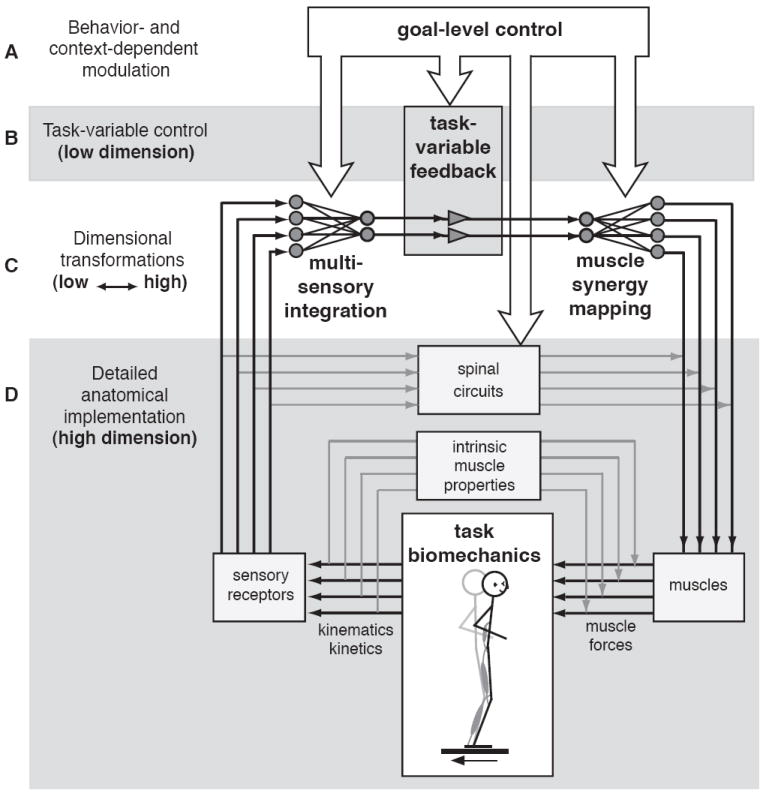Figure 8.

General framework for understanding dimensional reduction in muscle coordination of posture. The framework consists of a nested set of hierarchal feedback loops with much lower dimensionality at the higher levels than the lower levels. A) Goal-level modulation of postural responses occurs in task-variable space. Therefore behavioral or cognitive-level modulation can alter the task-variables attended to, as well as the way they are estimated and regulated by B) low dimensional feedback in the case of postural control. C) Mappings between low- and high-dimensional spaces are necessary for estimation and control of task-level variables. A dimensional reduction occurs in the multisensory integration mappings that use multiple afferent signals to estimate task-variables. Once the desired effect on the task-level variable is determined, a dimensional expansion occurs via muscle synergy mappings, allowing the action to be implemented in D) specific anatomical details. At this level there are many nonlinearities and state-dependent effects that can influence the eventual biomechanical output produced through the activation of a muscle synergy. However, some of these factors, such as spinal circuits, may be used to make the system more controllable by the reduced-dimension controller, and are also influenced by higher-level centers. This general framework can be used to make specific hypotheses about the characteristics of changes in muscle activation patterns in postural responses due to changes at all levels in the nervous system. In addition, it can be used to guide computational studies focused on understanding mappings to and from the low-dimensional space where movement is controlled by the nervous system.
